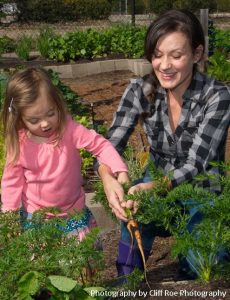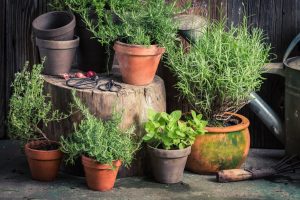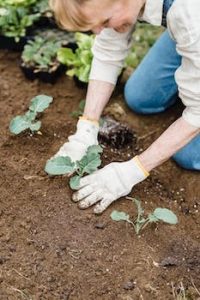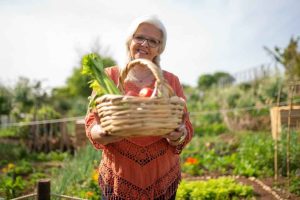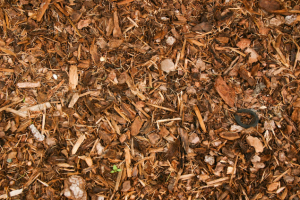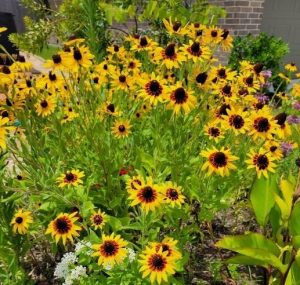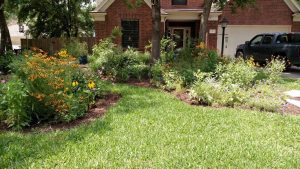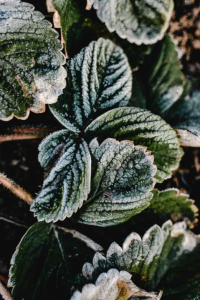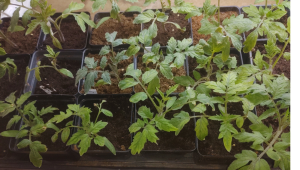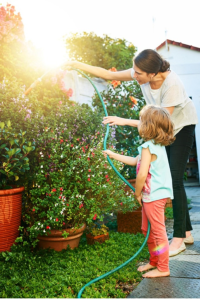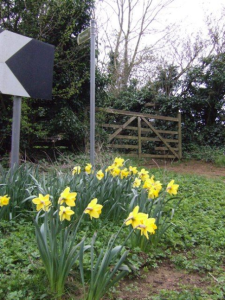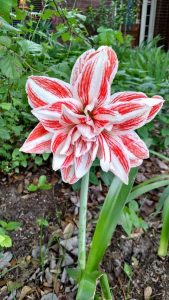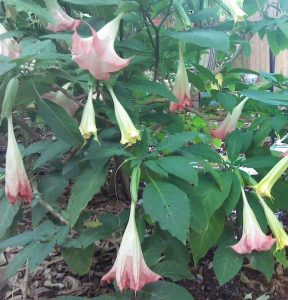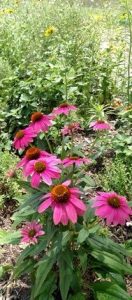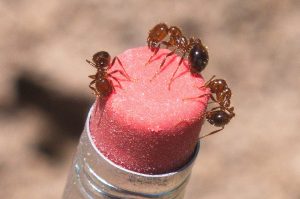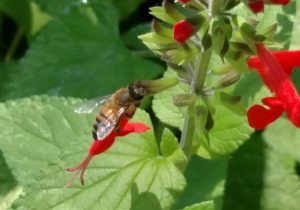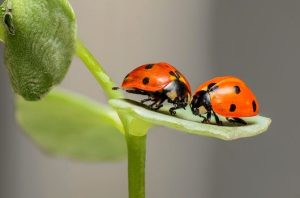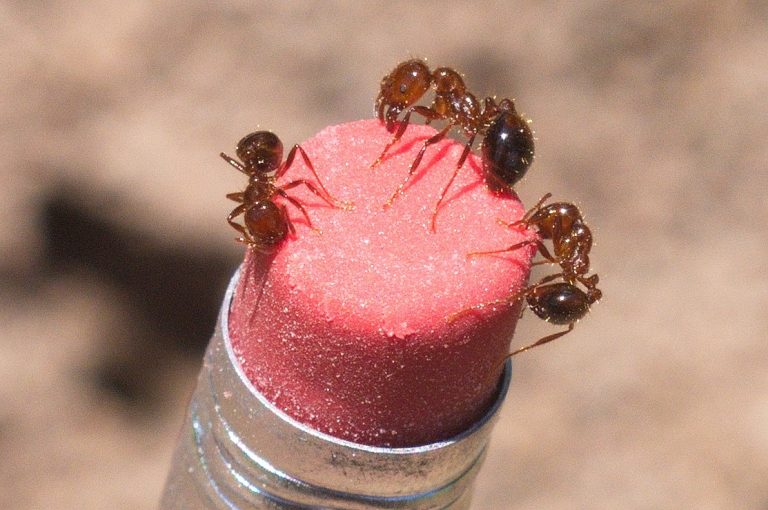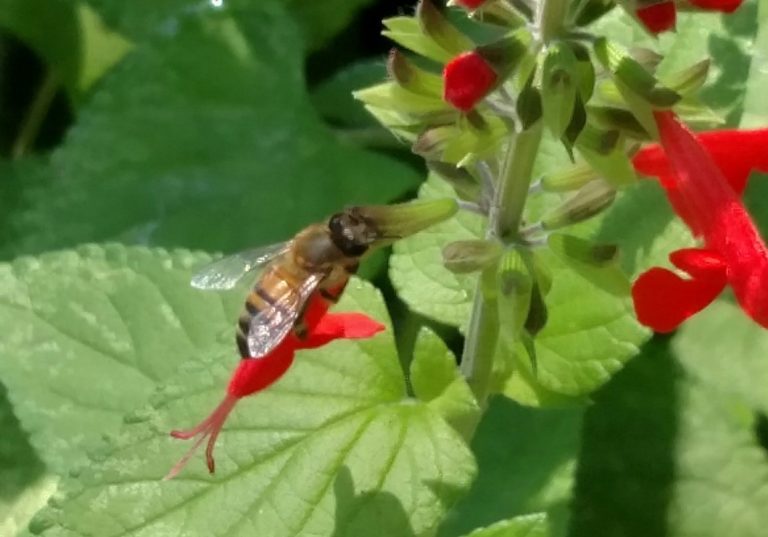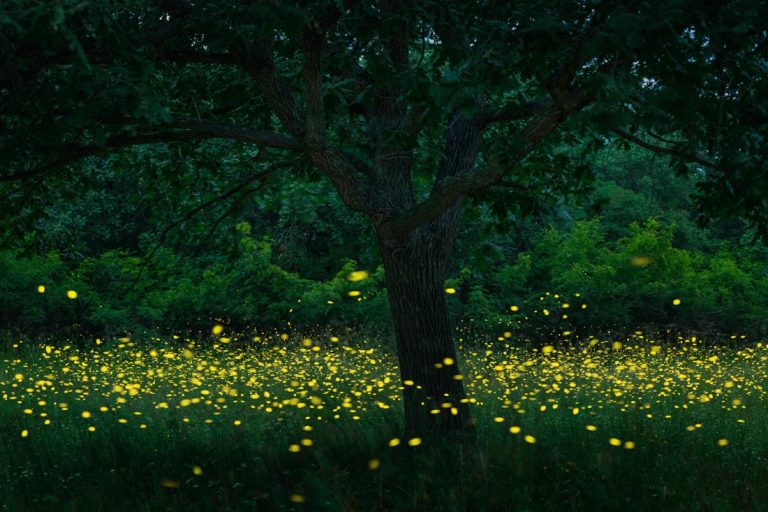There’s nothing like the fragrance of rosemary in a warm kitchen during cold and dreary winter days. Or the taste of fresh chives chopped on a baked potato. Or cilantro in that salsa you’re making. These herbs, as well as others, can be grown outside during the winter. B
Parsley
High in vitamins K, C and A, parsley’s spicy and slightly peppery taste pairs well with tomato-based sauces, potatoes, poultry,grain-based salads, seafood and egg dishes.
Parsley is very easy to grow. Spread the tiny seeds out in a pot, or into your garden bed. Cover the seeds lightly with some compost and press down to make sure the seeds are in contact with soil. Water gently every other day (unless of course it rains) until they sprout. Then continue watering as needed.
Although there are many cultivars of parsley, there are basically two types – flat leaf (also called Italian parsley) and curly leaf. Originating in the Mediterranean area, people use it as a spice and a vegetable. The taproot is used as a food in European cuisines.
Parsley has high nutrient value, particularly in folates, iron, copper and many trace elements, vitamin value, particularly in vitamins K, C and A.
Cilantro (Coriander)
Closely related to parsley, cilantro is also a great source of antioxidants. Using it to flavor food can also help to lower salt intake.Used for thousands of years, the dried leaves have been found in a cave in the Middle East dating back to 6,000 B.C. Cilantro has also been found in digs in ancient Egypt.
Some studies suggest that this herb may decrease the risk of obesity, diabetes and heart disease and, when used in cooking meat, can reduce heterocyclic amine (HCA), a chemical derived from meat cooked at a high heat. HCA has been associated with a higher risk of cancer.
The leaves of this plant are called cilantro, while the seeds are called coriander. Cilantro and its cousin are related to about 3,700 other plant species including carrots and celery.
Rosemary
This is a fragrant evergreen herb – also native to the Mediterranean. Part of the mint family, which includes oregano, thyme, basil and lavender and dozens of other plants, it’s a good source of iron, calcium and vitamin B-6.
Rosemary is best started from cuttings, although seeds work almost as well. It likes dry,well-drained soil, and prefers sun, but it will do okay in partial shade. It is a perennial, and can live for many, many years. Not only is rosemary a great herb, but it also makes a very attractive accent plant in the garden, adding its fresh fragrance to the outdoors.
Studies indicate that rosemary also has some beneficial effects in slowing human and breast carcinoma cells and other studies concluded that it might be useful as an anti-inflammatory agent. Many people put rosemary in bath water to soothe aching joints. It is high in iron, calcium and vitamin B6.
Chives
Chives are close relatives of garlic, shallot, leeks and scallions. In colder climates, chives may freeze back, but in southeast Texas,they rarely do, especially if they are in a sheltered area. They can also thrive in partial shade.
Use chives as garnishes, salads, egg salad sandwiches,vegetable stocks, potato dishes, omelets, and really anything that meets your taste. They do not do very well when cooked too much, so if you use them in soups or omelets, introduce them just before serving.
Originating in China and Siberia, hardy and drought-tolerant, chives can grow up to one foot tall in closely grouped stalks. They sport attractive lavender flowers in mid-summer. Chives do exceptionally well in containers.
Chives are high in vitamins K and A and contains large amounts of flavonoid antioxidants. They are high in calcium, iron, magnesium,potassium, copper and manganese and provide large amounts of thiamin, niacin, zinc and other beneficial minerals and acids. There is also some evidence that chives can inhibit salmonella populations
Indoor herbs
Most herbs can be grown indoors, although parsley and cilantro thrive in cold weather. Oregano, mint, thyme, rosemary, chives and most other herbs do as well indoors as outdoors. However, all of them require some light.
Herbs in containers
Whether you plant herbs indoors or outdoors, remember that herbs in containers require different treatment than herbs grown in the ground.Container-grown herbs, like any other potted plant, need good potting soil,instead of garden soil. While garden soil is suited for herbs grown in the ground, where water and air can move around easily, and nutrients are readily available, the same isn’t so for container plants. Potting soil is generally made up of composted bark and leaves, peat moss, and perlite or vermiculite. They generally need more water than herbs in the ground.
Planting in the ground
Plant herbs in gardens using a good lawn and garden mix and add organic compost as well. Make sure it is well drained. In fact, you can plant most herbs in among your vegetables. Don’t crowd them though. Since good garden soil should be alive with microorganisms, worms and tiny insects which aerate the soil, and mycorrhizal fungi which helps herbs obtain nutrients from the soil, the herbs in the garden probably won’t require as much care as those indoors.
There’s nothing like the fragrance of rosemary in a warm kitchen during cold and dreary winter days. Or the taste of fresh chives chopped on a baked potato. Or cilantro in that salsa you’re making. These herbs, as well as others, can be grown outside during the winter. B
BT



